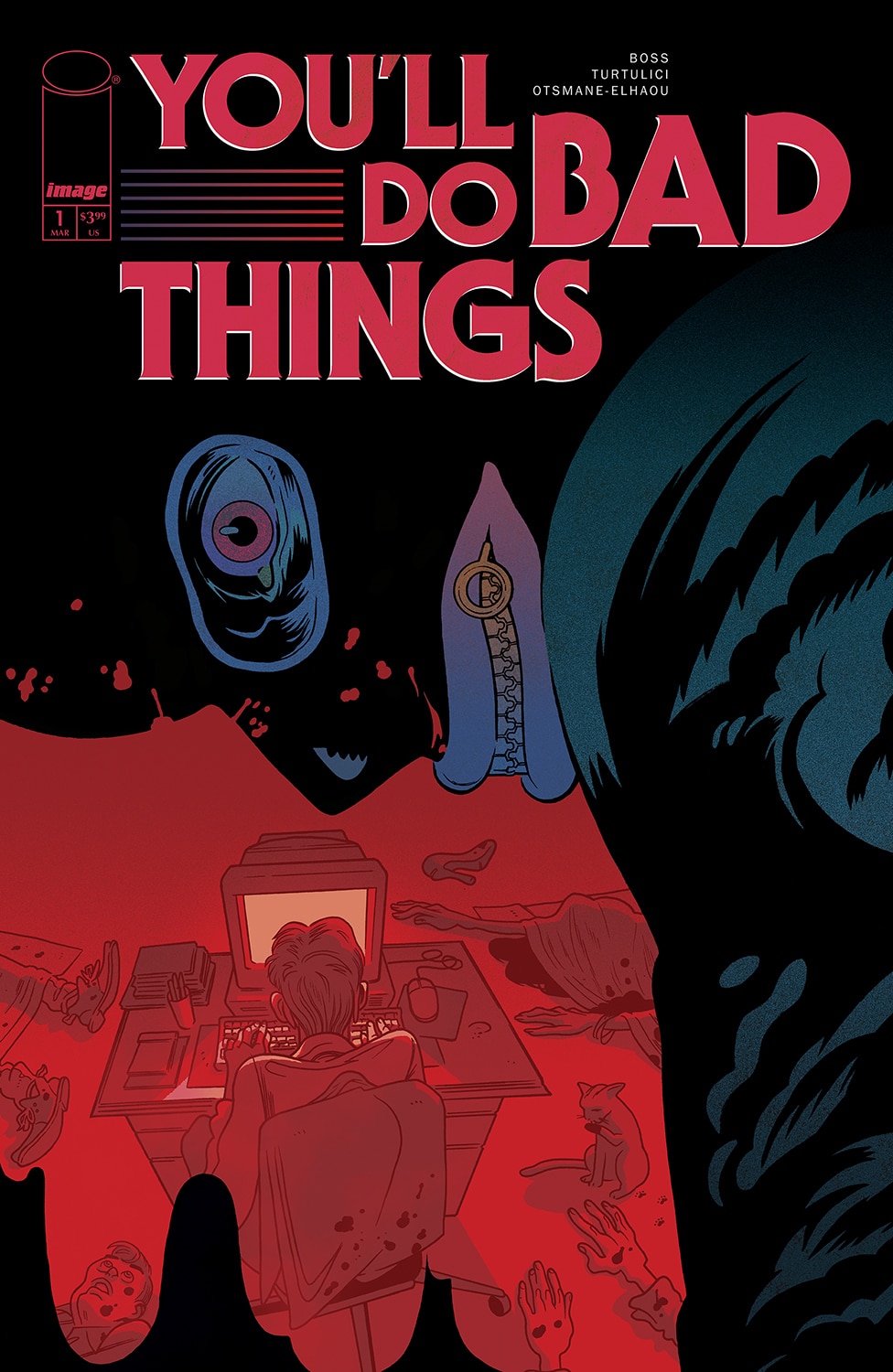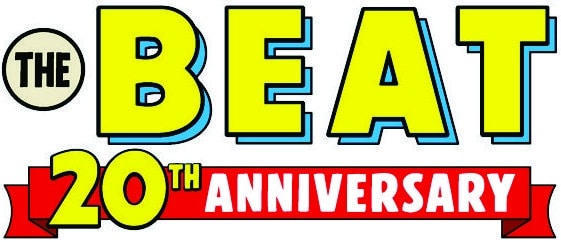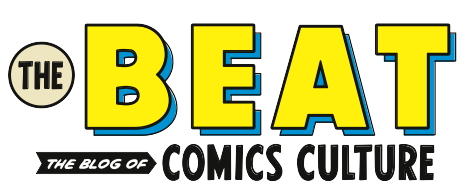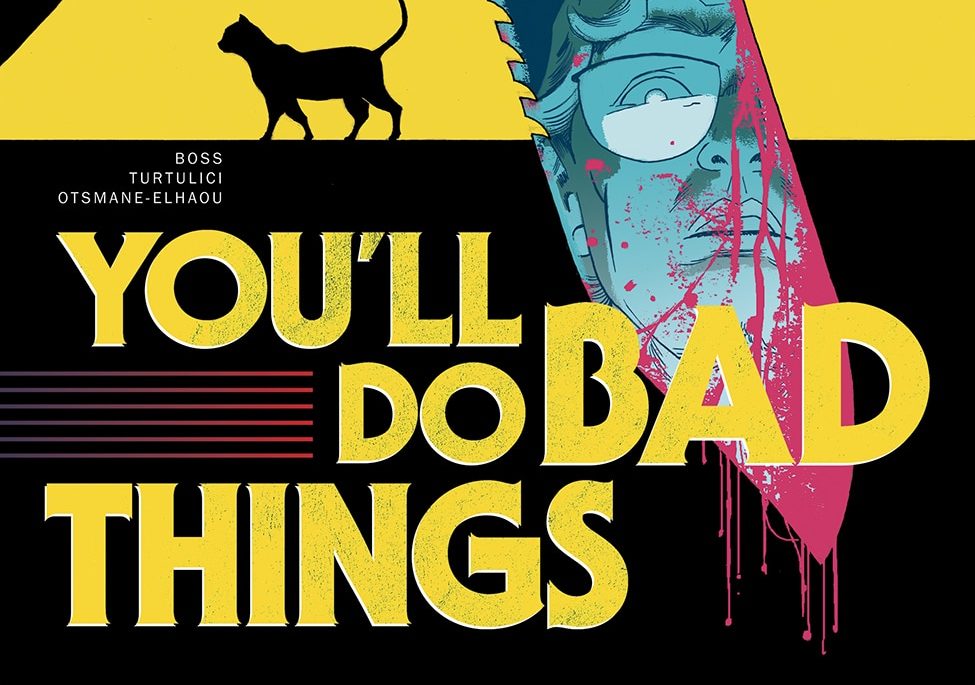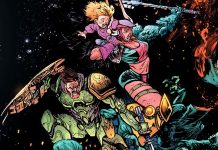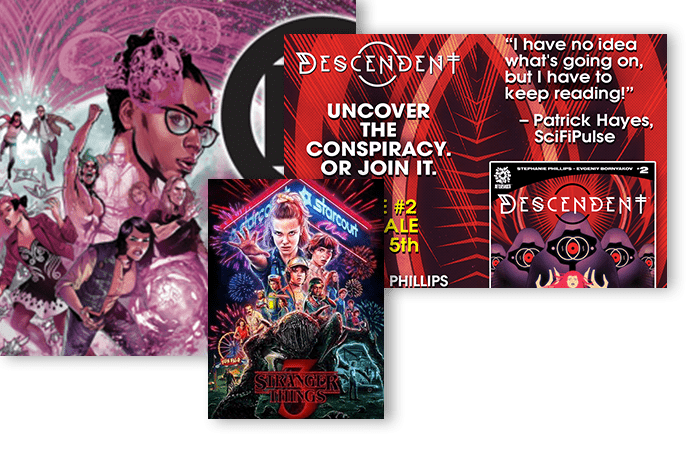You’ll Do Bad Things is sure to knock your socks off. The newest comic from acclaimed creator Tyler Boss, working alongside the incredibly talented Adriano Turtulici, this true-crime-meets-giallo horror series is a total delight, both for genre fans looking for a new, bloody read and those who might be more unfamiliar with the territory. Both creators do excellent work in the series, the debut issue of which arrives March 26th, 2025 from Image Comics and is available for pre-order now. The Beat sat down with writer Tyler Boss to discuss the creation of the series and give readers an insight into what they can expect.
This interview has been edited for clarity.
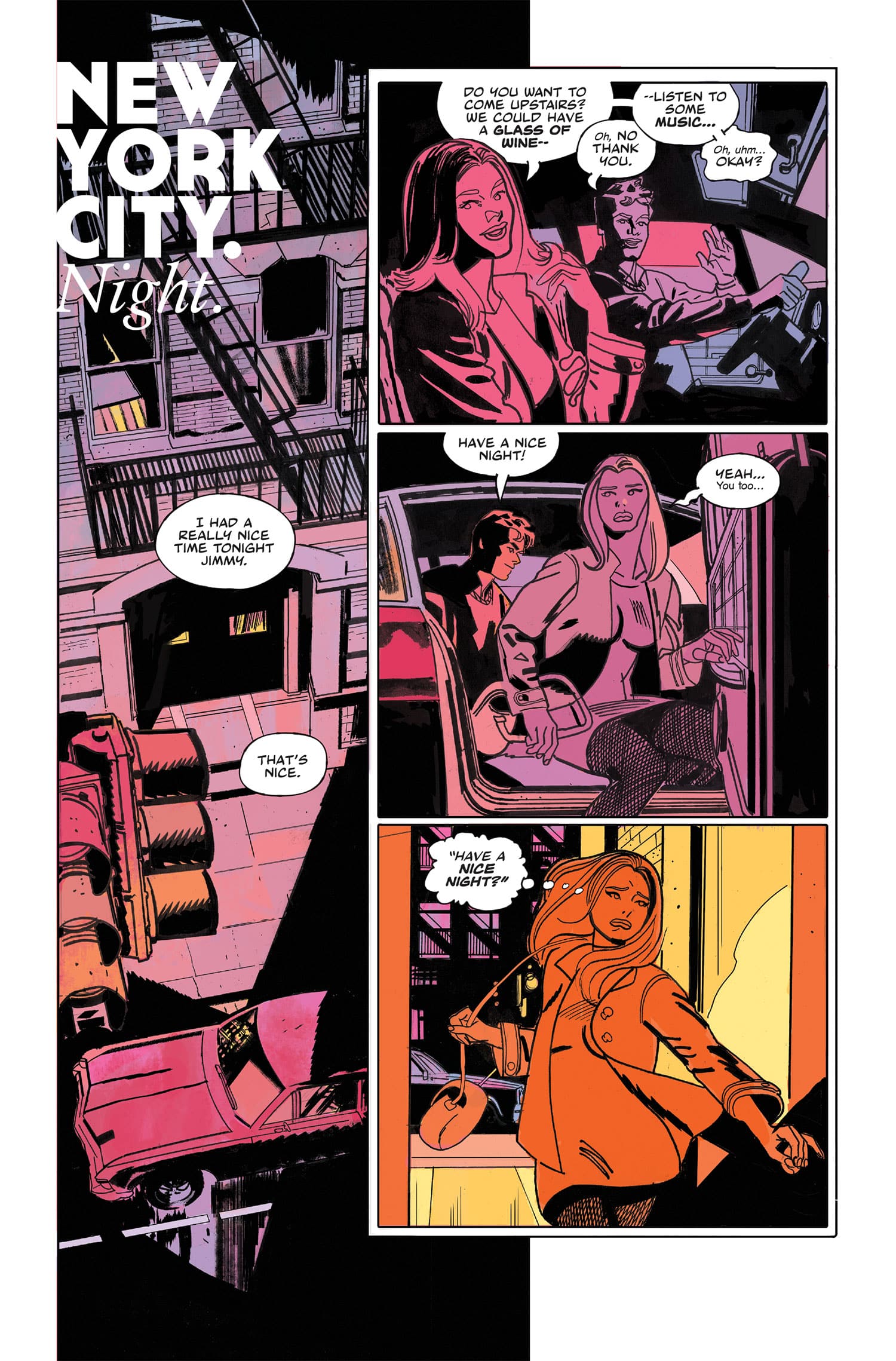
JARED BIRD: What inspired the concept of You’ll Do Bad Things?
TYLER BOSS: It started much in the same way as the main obstacle our main character Seth faces—I wanted to write a romance story. I had been looking at the Charles Burns mini-comics where he was doing faux-Romance covers mixed with his usual body horror and thinking about how well horror and romance pair together. Then, I was driving to Third Eye Comics in Annapolis with Matthew Rosenberg and Joshua Hixson, and during the whole drive Matthew and I were pitching book ideas to Hixson. Josh ended up liking one of Matthew’s pitches more, but I couldn’t get this one story I had pitched out of my head. That was the kernel of what You’ll Do Bad Things would be. I would play around with it when I found time, thinking I would end up drawing it someday. Then, one day sitting in my hotel room at a San Diego Comic-Con, I was scrolling through Instagram and I saw Michael Walsh share Adriano’s drawing of Ian Curtis from Joy Division. More importantly than the subject matter being one of my favorite musicians, was the quality of the drawing. It was ‘it.’ The thing that would make the book work. I reached out to Adriano, and we started really building from there.
BIRD: What was it like to work with Adriano Turtulici?
BOSS: In short, it’s been a dream. You can see it all on the page, he’s just got it. He’s such a considered cartoonist and thinker on the page in ways that may go unnoticed. A lot of times, young cartoonists (I’m roasting myself here) try to show how smart they are with flashy paneling or leaning into formalism even when it doesn’t suit the assignment. But Adriano does everything in service of the story and elevates every aspect of my script. The first thing I hear from everyone when they first read the book is about Adriano’s colors, and rightfully so—they’re divine. But after the initial shock of the stunning color work, you start to dive into what he’s doing with his character work and his line quality, and you see his level of craftsmanship is more than skin deep—it’s the whole body.
BIRD: How does your own experience as an artist and visual designer impact how you write comics?
BOSS: I am guilty of putting stage direction on almost every page, even though as an artist that’s the fun part to do—figuring out the blocking, and how everything pieces together. But Adriano knows to ignore me if he has a better instinct or solution. In a later issue, we have a bit of a chase scene, and I didn’t write panel descriptions at all for those pages. I gave Adriano sort of a prose-style couple of paragraphs telling him the story of what happens on those pages, and I left all the paneling decisions up to him. The results were fantastic, and while that’s not a method I think should be employed all the time, it’s fun to figure out different ways that our collaboration can work.
BIRD: True Crime rapidly rose to a noticeable height in popularity, before a number of works trying to really challenge and dissect it. How did you want to approach true crime in this comic?
BOSS: I’m an avid consumer of True Crime media and have been for most of my life. So, in no way is the book meant to be finger waggy about the genre, but I still do have some critical things to say about it. I’m excited to see people’s reactions to what we do at the conclusion of the book. I won’t say that we have a thesis on the topic, but we definitely take a swing at it.
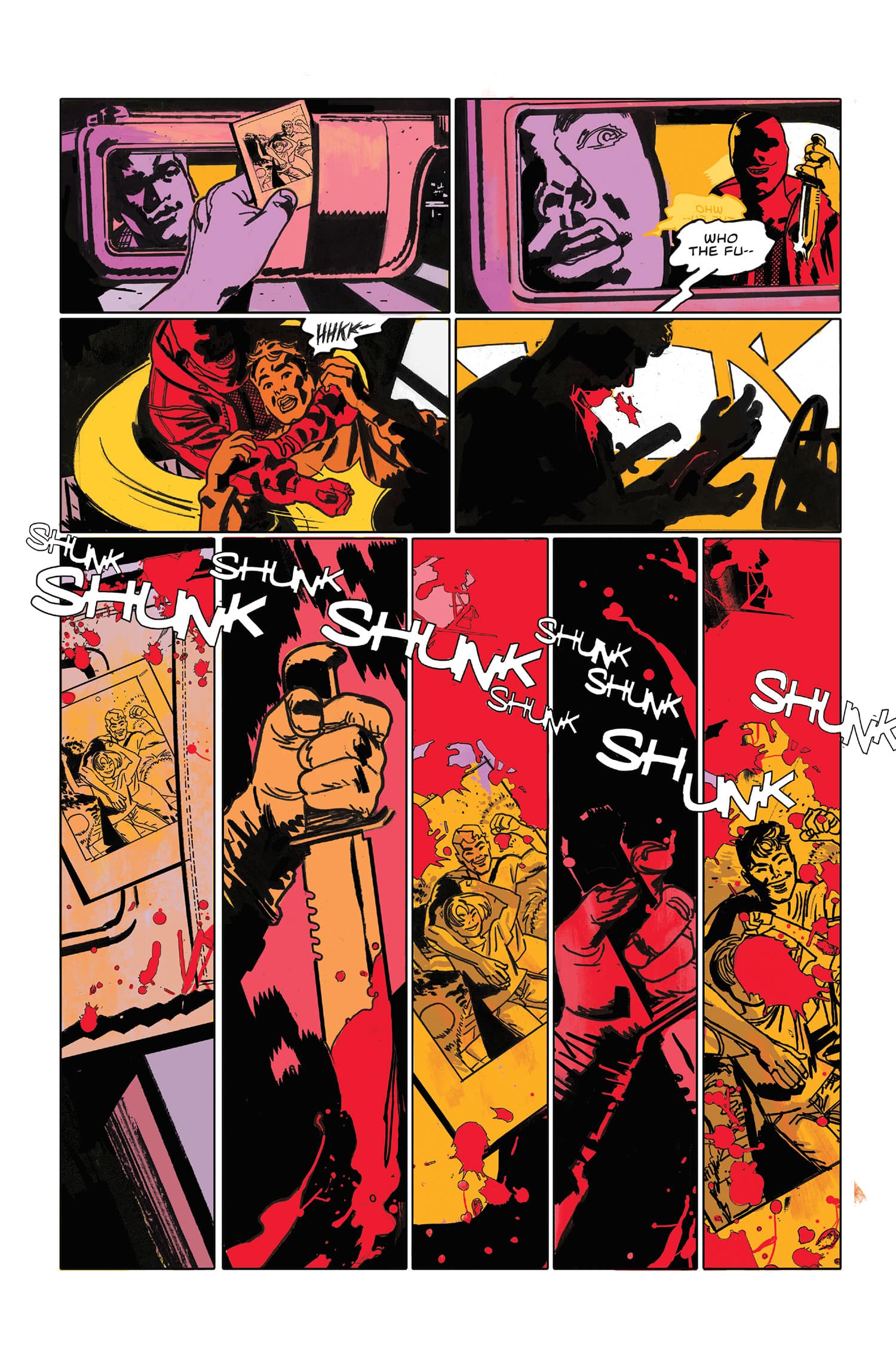
BIRD: Giallo is very much a cinematic movement tied to a certain time and place. Was it a difficult process to adapt it for comics?
BOSS: I actually found the process to be really smooth. The genre itself came about much in the same way a lot of comics did, originating from cheap pulp novels at newsstands—dime store murder mysteries featuring a leather-clad, knife-wielding killer, with buckets of neon-colored blood, and nudity. Like any popular genre from a prior era, there are things that we need to push back on as we update it for a modern audience. But I think part of why we leaned into the Giallo subgenre—as opposed to say, just the slasher genre—is that its lighting and pulpy subject matter felt like an easy fit with comics.
BIRD: The act of writing is the core of the story of the series, including the writer’s biggest fear in the form of a blank page. What influenced the series’ meta approach?
BOSS: I usually hate stories about artists and writers. I do both for a living and it’s a terribly dull profession to observe on a day-to-day basis. That is unless you’re big on watching people sit still for a minimum of 8 hours every day. But in coming up with what the story is and what we wanted to say with the book, an author as the subject became the obvious answer to how we tell it. The metatextual nature of it just made sense to explore.
BIRD: You’ve worked in a number of different genres and styles. Do you enjoy challenges and experimentation?
BOSS: For sure. It’s probably a deeply silly thing for me to want to jump around genres as much as I do, but I can’t help it. I love storytelling as a core thing we do as humans so much, and every genre has its own set of tools to work with. Learning how to use them and make something in every sandbox is my favorite thing to do.
BIRD: What other works of yours would you encourage readers to check out?
BOSS: If readers like the mystery of You’ll Do Bad Things, I have another small-town mystery story called Dead Dog’s Bite from Dark Horse Comics. But my other two books, 4 Kids Walk into a Bank, and the ongoing Image Comics series What’s the Furthest Place from Here? with writer/friend/fiend Matthew Rosenberg are also great books that people should check out. One is about child larceny and the other one is about child gangs. I’ll let you figure out which is which.
